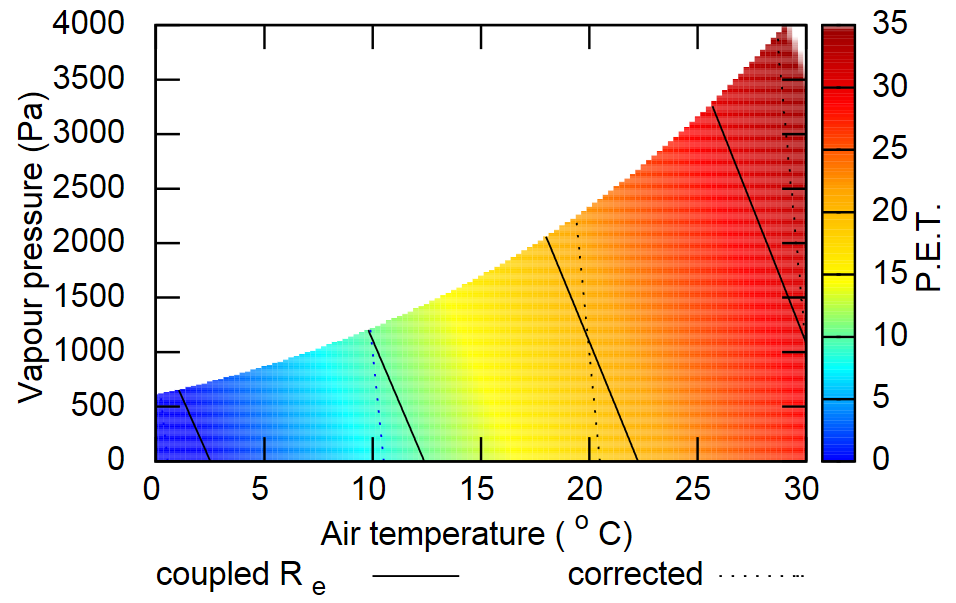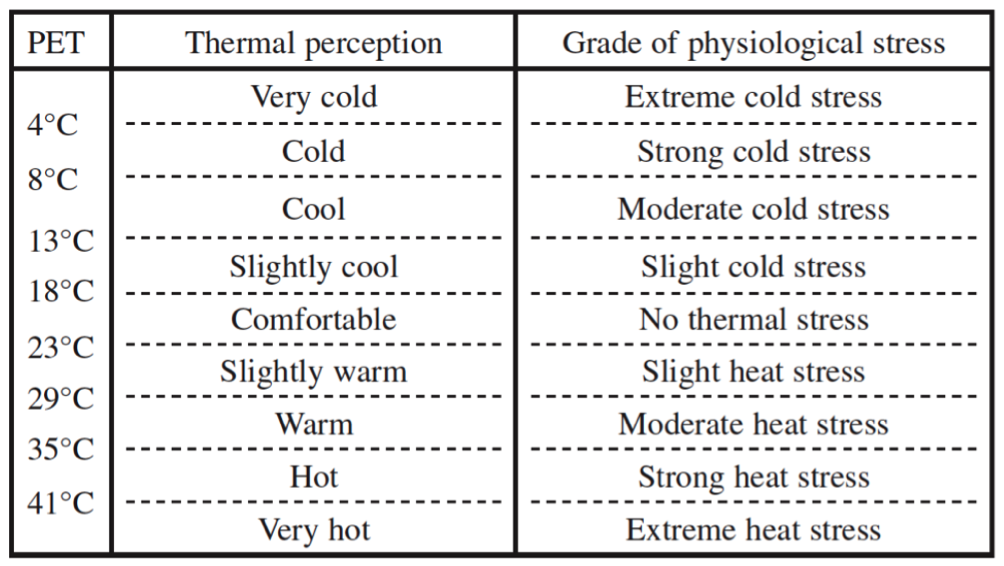PET index: a revised model for improved thermal comfort

Quentin Goestchel, a student at ENS Paris-Saclay, and Edouard Walther of AREP have studied and corrected the calculation routine for the Physiological Equivalent Temperature (PET) index to obtain more precise measurements in view of improving individuals’ thermal comfort.
Physiological Equivalent Temperature
The PET comfort index, derived from the human heat balance model, combines weather and thermo-physiological parameters (clothing and human activities).
It is used to measure the thermal comfort of an individual in a given situation by comparing her physiological responses to those she would have in the reference environment, for example an office in which she feels generally comfortable.
“Strictly speaking, the PET index is a temperature. It is the operative temperature of a reference environment that would cause the same physiological response in the subject as the environment under study, i.e., the same skin temperature and core temperature.”
For the study of indoor spaces, the PET index is often used as its reference environment is comparable to an office and it is easier to apply and less theoretical than the Universal Thermal Climate Index (UTCI), a more complex variant (with about 340 calculation nodes instead of two).
PET applications
While working on a project to adapt this index to semi-outdoor environments such as railway stations, Mr Goestchel and Dr Walther discovered errors in the calculation routine.
The PET index is already used in building energy simulation programs, such as Rhino & EnergyPlus, through the LadyBug plugin.
As the original code in the plugin contains inaccuracies, Dr Walther has opened a chat about it on Github.
Critical study
To correct the inaccuracies they identified, Mr Goestchel and Dr Walther proposed a corrected version of the calculation routine for the index, incorporating a state-of-the-art vapour diffusion model and a current numerical method for solving the non-linear equation system for PET.
“Looking closely at the definition of the reference situation,” Mr Goestchel explained, “you realize that this widely used index is defined for a white male who is 1.8m tall and weighs 75kg.
“Our study shows that the corrected model gives results that can differ by between -7 Kelvin and 2.5 Kelvin from the original model (see “Values of the Index” table). This indicates that the simplifications made in the old version are excessive for certain applications of the index.
“At the end of the article, we therefore suggest taking into account the variability of human morphology.”
PET Index values

The study has just been published in international peer-reviewed journals, including Science Direct, and Dr Walther will soon present it at an IBPSA conference in Bordeaux to an audience of French civil engineers.
